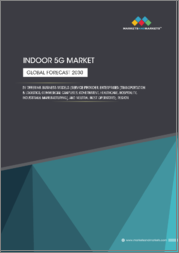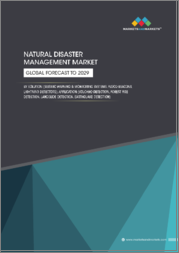
|
시장보고서
상품코드
1675686
통신 부문 GIS 시장 : 유형별, 전개 모델별, 최종사용자별, 지역별(2025-2033년)GIS in Telecom Sector Market Report by Type (Software, Services), Deployment Model (Cloud-based, On-premises), End User (Large Enterprises, Small and Medium-sized Enterprises (SMEs)), and Region 2025-2033 |
||||||
통신 부문 GIS 세계 시장 규모는 2024년 25억 달러에 달했습니다. 향후 IMARC Group은 2033년까지 시장 규모가 56억 달러에 달하고, 2025년부터 2033년까지 8.79%의 연평균 성장률(CAGR)을 나타낼 것으로 예상하고 있습니다. 자산 관리에 대한 수요 증가, 고객 경험 향상 및 서비스 개선에 대한 관심 증가, 네트워크 관리 시스템과 같은 통신 시스템과 GIS의 통합 등이 시장을 주도하는 주요 요인으로 꼽힙니다.
GIS는 지리 데이터와 분석 도구를 결합하여 공간 정보를 시각화, 분석, 해석하는 강력한 기술입니다. GIS를 다른 통신 시스템과 통합함으로써 사업자는 효율적으로 자산을 추적 및 관리하고, 네트워크 성능을 모니터링하고, 네트워크 혼잡및 범위 갭이 발생할 수 있는 지역을 파악할 수 있습니다. 커버리지 갭이 발생할 수 있는 지역을 파악할 수 있습니다. 또한 인구 밀도, 지형, 기존 인프라 등의 요소를 고려하여 새로운 인프라를 배치하기에 적합한 위치를 파악할 수 있습니다. 또한, 사업자가 네트워크 데이터를 분석하여 커버리지, 용량, 서비스 품질을 개선할 수 있는 기회를 파악할 수 있도록 함으로써 네트워크 최적화를 지원합니다. 또한, 네트워크 데이터를 시각적으로 표시하고, 네트워크 병목현상을 쉽게 식별하고, 네트워크 확장 및 업그레이드를 계획할 수 있도록 지원함으로써 의사결정 과정을 지원합니다.
통신 부문 GIS 시장 동향 :
네트워크 계획 및 최적화에 대한 수요 증가가 세계 시장을 주도하고 있습니다. 또한, 자산 관리에 대한 수요 증가는 통신 분야 GIS 시장을 활성화시키고 있는데, GIS를 통해 사업자는 자산의 위치, 상태, 속성을 정확하게 추적하고 관리할 수 있어 업무 효율성 향상, 유지보수 비용 절감, 자산의 적시 업그레이드 및 교체가 가능하기 때문입니다. GIS는 고객의 공간적 분포, 이용 패턴, 다양한 지역의 서비스 품질을 파악하는 데 도움이 되기 때문에 고객 경험 향상과 서비스 개선에 대한 관심이 높아질 것으로 예상됩니다. 또한, GIS는 통신 사업자가 다른 지역 시장 인구 통계, 고객 행동, 경쟁사의 존재를 분석하는 데 도움이 됩니다. GIS는 스몰셀, 기지국, 백홀 연결의 최적 배치를 결정하는 데 중요한 역할을 하기 때문에 전 세계적으로 5G 네트워크의 구축이 진행되고 있는 것도 시장 전망을 밝게 하는 요인입니다. 또한, GIS는 통신 인프라와 교통, 에너지, 공공 안전 시스템과 같은 다른 스마트 시티 구성 요소와의 통합을 지원하기 때문에 스마트 시티 개념의 확대도 GIS 수요에 영향을 미치고 있습니다. 이와는 별도로 네트워크 관리 시스템, 고객관계관리(CRM) 시스템, 과금 시스템 등 통신 시스템과 GIS의 통합은 네트워크 운영, 고객 데이터, 재무 지표에 대한 전반적인 뷰를 가능하게 하고, 워크플로우의 간소화와 운영 효율성 향상을 가져와 시장에 영향을 미치고 있습니다. 시장에 영향을 미치고 있습니다.
본 보고서에서 다룬 주요 질문
- 지금까지 전 세계 통신 부문 GIS 시장은 어떻게 성장해 왔는가?
- 세계 통신 부문 GIS 시장 성장 촉진요인, 저해요인, 기회요인은 무엇인가?
- 각 촉진요인, 억제요인 및 기회가 세계 통신 부문 GIS 시장에 미치는 영향은?
- 주요 지역 시장은?
- 가장 매력적인 통신 부문 GIS 시장은 어느 국가인가?
- 유형별 시장 분석은?
- 통신 부문 GIS 시장에서 가장 매력적인 유형은?
- 전개모델에 따른 시장 분석은?
- 통신 부문 GIS 시장에서 가장 매력적인 전개 모델은?
- 최종사용자별 시장 분석은?
- 통신 부문 GIS 시장에서 가장 매력적인 최종 사용자는?
- 세계 통신 부문 GIS 시장 경쟁 구도는?
- 세계 통신 부문 GIS 시장의 주요 기업은?
목차
제1장 서문
제2장 조사 범위와 조사 방법
- 조사 목적
- 이해관계자
- 데이터 소스
- 1차 정보
- 2차 정보
- 시장 추정
- 보텀업 접근
- 톱다운 접근
- 조사 방법
제3장 주요 요약
제4장 서론
- 개요
- 주요 업계 동향
제5장 세계의 통신 부문 GIS 시장
- 시장 개요
- 시장 실적
- COVID-19의 영향
- 시장 예측
제6장 시장 분석 : 유형별
- 소프트웨어
- 서비스
제7장 시장 분석 : 전개 모델별
- 클라우드 기반
- 온프레미스
제8장 시장 분석 : 최종사용자별
- 대기업
- 중소기업
제9장 시장 분석 : 지역별
- 북미
- 미국
- 캐나다
- 아시아태평양
- 중국
- 일본
- 인도
- 한국
- 호주
- 인도네시아
- 기타
- 유럽
- 독일
- 프랑스
- 영국
- 이탈리아
- 스페인
- 러시아
- 기타
- 라틴아메리카
- 브라질
- 멕시코
- 기타
- 중동 및 아프리카
- 시장 내역 : 국가별
제10장 성장 촉진요인 및 억제요인, 기회
- 개요
- 성장 촉진요인
- 성장 억제요인
- 기회
제11장 밸류체인 분석
제12장 Porter의 Five Forces 분석
- 개요
- 바이어의 교섭력
- 공급 기업의 교섭력
- 경쟁 정도
- 신규 진출업체의 위협
- 대체품의 위협
제13장 가격 분석
제14장 경쟁 구도
- 시장 구조
- 주요 기업
- 주요 기업 개요
- Bentley Systems Incorporated
- Blue Marble Geographics
- Cyient
- Esri Inc.
- GE Digital(General Electric Company)
- Hexagon AB
- Maxar Technologies Inc.
- RMSI Private Limited
- Schneider Electric SE
- SuperMap Software Co. Ltd.
- Trimble Inc.
The global GIS in telecom sector market size reached USD 2.5 Billion in 2024. Looking forward, IMARC Group expects the market to reach USD 5.6 Billion by 2033, exhibiting a growth rate (CAGR) of 8.79% during 2025-2033. The increasing demand for asset management, the increasing focus on improving customer experience and service improvement, and the integration of GIS with telecom systems, such as network management systems represent some of the key factors driving the market.
GIS is a powerful technology that combines geographic data with analytical tools to visualize, analyze, and interpret spatial information. It helps in mapping and spatially analyzing the location of telecommunication assets such as cell towers, fiber optic cables, and network equipment. By integrating GIS with other telecom systems, operators can efficiently track and manage their assets, monitor network performance, and identify areas of potential network congestion or coverage gaps. It also aids in identifying suitable locations for new infrastructure deployment, considering factors such as population density, terrain, and existing infrastructure. Additionally, it assists in network optimization by enabling operators to analyze network data and identify opportunities for improving coverage, capacity, and quality of service. It also supports decision-making processes by providing visual representations of network data, facilitating the identification of network bottlenecks, and aiding in the planning of network expansion or upgrades.
GIS in Telecom Sector Market Trends:
The growing demand for network planning and optimization is driving the global market. Moreover, the increasing demand for asset management is catalyzing the market for GIS in the telecom sector as it allows operators to track and maintain accurate records of asset locations, conditions, and attributes which further improves operational efficiency, reduces maintenance costs, and ensures timely asset upgrades or replacements. Along with this, the increasing focus on improving customer experience and service improvement is also anticipating the market as GIS helps in understanding the spatial distribution of customers, their usage patterns, and the quality of service in different areas. Additionally, GIS helps telecom operators analyze market demographics, customer behavior, and competitor presence in different geographical areas. This is creating a positive market outlook. The rising deployment of 5G networks across the globe is acting as another growth-inducing factor, as GIS plays a crucial role in determining the best placement of small cells, base stations, and backhaul connections. Furthermore, the expanding smart city initiatives are also influencing the demand for GIS as it assists in integrating telecommunications infrastructure with other smart city components, such as transportation, energy, and public safety systems. Apart from this, the integration of GIS with telecom systems, such as network management systems, customer relationship management (CRM) systems, and billing systems, is impacting the market as it enables a holistic view of network operations, customer data, and financial metrics, resulting in streamlined workflows and enhanced operational efficiency.
Key Market Segmentation:
Type Insights:
- Software
- Services
Deployment Model Insights:
- Cloud-based
- On-premises
- End User Insights
- Large Enterprises
- Small and Medium-sized Enterprises (SMEs)
Regional Insights:
- North America
- United States
- Canada
- Asia Pacific
- China
- Japan
- India
- South Korea
- Australia
- Indonesia
- Others
- Europe
- Germany
- France
- United Kingdom
- Italy
- Spain
- Russia
- Others
- Latin America
- Brazil
- Mexico
- Others
- Middle East and Africa
- The report has also provided a comprehensive analysis of all the major regional markets, which include North America (the United States and Canada); Asia Pacific (China, Japan, India, South Korea, Australia, Indonesia, and others); Europe (Germany, France, the United Kingdom, Italy, Spain, Russia, and others); Latin America (Brazil, Mexico, and others); and the Middle East and Africa. According to the report, North America exhibited a clear dominance in the market. Some of the factors driving the North America GIS in telecom sector market included expanding internet access in rural areas, the proliferation of IoT devices and applications, and enhanced field operations.
Competitive Landscape:
- The report has also provided a comprehensive analysis of the competitive landscape in the global GIS in telecom sector market. Detailed profiles of all major companies have been provided. Some of the companies covered include Bentley Systems Incorporated, Blue Marble Geographics, Cyient, Esri Inc., GE Digital (General Electric Company), Hexagon AB, Maxar Technologies Inc., RMSI Private Limited, Schneider Electric SE, SuperMap Software Co. Ltd., Trimble Inc. etc. Kindly note that this only represents a partial list of companies, and the complete list has been provided in the report.
Key Questions Answered in This Report:
- How has the global GIS in telecom sector market performed so far, and how will it perform in the coming years?
- What are the drivers, restraints, and opportunities in the global GIS in telecom sector market?
- What is the impact of each driver, restraint, and opportunity on the global GIS in telecom sector market?
- What are the key regional markets?
- Which countries represent the most attractive GIS in telecom Sector market?
- What is the breakup of the market based on the type?
- Which is the most attractive type in the GIS in telecom sector market?
- What is the breakup of the market based on the deployment model?
- Which is the most attractive deployment model in the GIS in telecom sector market?
- What is the breakup of the market based on the end user?
- Which is the most attractive end user in the GIS in telecom sector market?
- What is the competitive structure of the global GIS in telecom sector market?
- Who are the key players/companies in the global GIS in telecom sector market?
Table of Contents
1 Preface
2 Scope and Methodology
- 2.1 Objectives of the Study
- 2.2 Stakeholders
- 2.3 Data Sources
- 2.3.1 Primary Sources
- 2.3.2 Secondary Sources
- 2.4 Market Estimation
- 2.4.1 Bottom-Up Approach
- 2.4.2 Top-Down Approach
- 2.5 Forecasting Methodology
3 Executive Summary
4 Introduction
- 4.1 Overview
- 4.2 Key Industry Trends
5 Global GIS in Telecom Sector Market
- 5.1 Market Overview
- 5.2 Market Performance
- 5.3 Impact of COVID-19
- 5.4 Market Forecast
6 Market Breakup by Type
- 6.1 Software
- 6.1.1 Market Trends
- 6.1.2 Market Forecast
- 6.2 Services
- 6.2.1 Market Trends
- 6.2.2 Market Forecast
7 Market Breakup by Deployment Model
- 7.1 Cloud-based
- 7.1.1 Market Trends
- 7.1.2 Market Forecast
- 7.2 On-premises
- 7.2.1 Market Trends
- 7.2.2 Market Forecast
8 Market Breakup by End User
- 8.1 Large Enterprises
- 8.1.1 Market Trends
- 8.1.2 Market Forecast
- 8.2 Small and Medium-sized Enterprises (SMEs)
- 8.2.1 Market Trends
- 8.2.2 Market Forecast
9 Market Breakup by Region
- 9.1 North America
- 9.1.1 United States
- 9.1.1.1 Market Trends
- 9.1.1.2 Market Forecast
- 9.1.2 Canada
- 9.1.2.1 Market Trends
- 9.1.2.2 Market Forecast
- 9.1.1 United States
- 9.2 Asia-Pacific
- 9.2.1 China
- 9.2.1.1 Market Trends
- 9.2.1.2 Market Forecast
- 9.2.2 Japan
- 9.2.2.1 Market Trends
- 9.2.2.2 Market Forecast
- 9.2.3 India
- 9.2.3.1 Market Trends
- 9.2.3.2 Market Forecast
- 9.2.4 South Korea
- 9.2.4.1 Market Trends
- 9.2.4.2 Market Forecast
- 9.2.5 Australia
- 9.2.5.1 Market Trends
- 9.2.5.2 Market Forecast
- 9.2.6 Indonesia
- 9.2.6.1 Market Trends
- 9.2.6.2 Market Forecast
- 9.2.7 Others
- 9.2.7.1 Market Trends
- 9.2.7.2 Market Forecast
- 9.2.1 China
- 9.3 Europe
- 9.3.1 Germany
- 9.3.1.1 Market Trends
- 9.3.1.2 Market Forecast
- 9.3.2 France
- 9.3.2.1 Market Trends
- 9.3.2.2 Market Forecast
- 9.3.3 United Kingdom
- 9.3.3.1 Market Trends
- 9.3.3.2 Market Forecast
- 9.3.4 Italy
- 9.3.4.1 Market Trends
- 9.3.4.2 Market Forecast
- 9.3.5 Spain
- 9.3.5.1 Market Trends
- 9.3.5.2 Market Forecast
- 9.3.6 Russia
- 9.3.6.1 Market Trends
- 9.3.6.2 Market Forecast
- 9.3.7 Others
- 9.3.7.1 Market Trends
- 9.3.7.2 Market Forecast
- 9.3.1 Germany
- 9.4 Latin America
- 9.4.1 Brazil
- 9.4.1.1 Market Trends
- 9.4.1.2 Market Forecast
- 9.4.2 Mexico
- 9.4.2.1 Market Trends
- 9.4.2.2 Market Forecast
- 9.4.3 Others
- 9.4.3.1 Market Trends
- 9.4.3.2 Market Forecast
- 9.4.1 Brazil
- 9.5 Middle East and Africa
- 9.5.1 Market Trends
- 9.5.2 Market Breakup by Country
- 9.5.3 Market Forecast
10 Drivers, Restraints, and Opportunities
- 10.1 Overview
- 10.2 Drivers
- 10.3 Restraints
- 10.4 Opportunities
11 Value Chain Analysis
12 Porters Five Forces Analysis
- 12.1 Overview
- 12.2 Bargaining Power of Buyers
- 12.3 Bargaining Power of Suppliers
- 12.4 Degree of Competition
- 12.5 Threat of New Entrants
- 12.6 Threat of Substitutes
13 Price Analysis
14 Competitive Landscape
- 14.1 Market Structure
- 14.2 Key Players
- 14.3 Profiles of Key Players
- 14.3.1 Bentley Systems Incorporated
- 14.3.1.1 Company Overview
- 14.3.1.2 Product Portfolio
- 14.3.2 Blue Marble Geographics
- 14.3.2.1 Company Overview
- 14.3.2.2 Product Portfolio
- 14.3.3 Cyient
- 14.3.3.1 Company Overview
- 14.3.3.2 Product Portfolio
- 14.3.4 Esri Inc.
- 14.3.4.1 Company Overview
- 14.3.4.2 Product Portfolio
- 14.3.5 GE Digital (General Electric Company)
- 14.3.5.1 Company Overview
- 14.3.5.2 Product Portfolio
- 14.3.6 Hexagon AB
- 14.3.6.1 Company Overview
- 14.3.6.2 Product Portfolio
- 14.3.7 Maxar Technologies Inc.
- 14.3.7.1 Company Overview
- 14.3.7.2 Product Portfolio
- 14.3.8 RMSI Private Limited
- 14.3.8.1 Company Overview
- 14.3.8.2 Product Portfolio
- 14.3.9 Schneider Electric SE
- 14.3.9.1 Company Overview
- 14.3.9.2 Product Portfolio
- 14.3.10 SuperMap Software Co. Ltd.
- 14.3.10.1 Company Overview
- 14.3.10.2 Product Portfolio
- 14.3.11 Trimble Inc.
- 14.3.11.1 Company Overview
- 14.3.11.2 Product Portfolio
- 14.3.1 Bentley Systems Incorporated
Kindly note that this only represents a partial list of companies, and the complete list has been provided in the report.



















